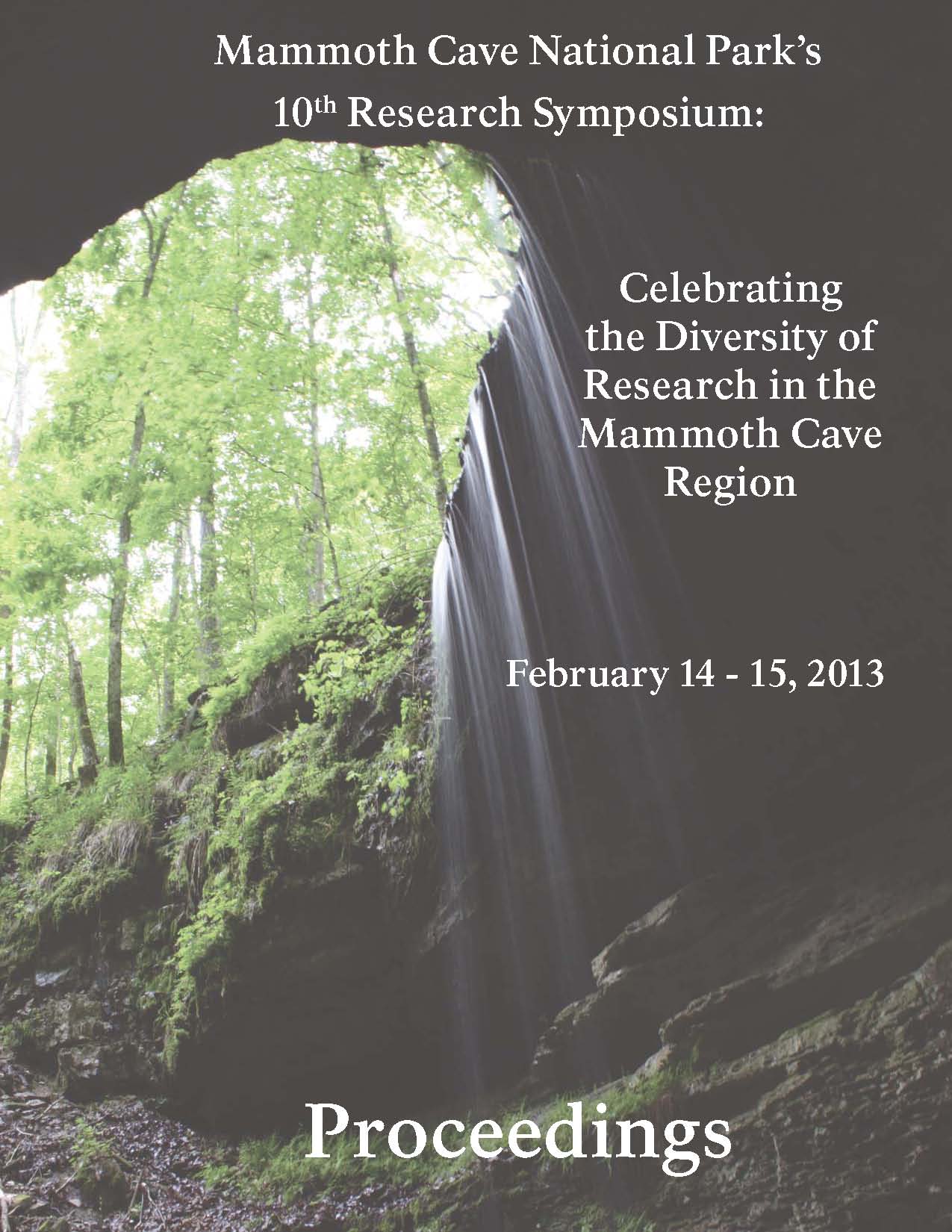Start Date
14-2-2013 2:50 PM
Description
Cave-roosting bats are important to the nutrient-poor cave ecosystem because they import organic material which supports a specialized cave invertebrate community. Nine of thirteen bat species found at Mammoth Cave National Park are generally associated with caves at some time of the year. Two of the species that inhabit park caves are on the Federal Endangered Species List: gray bat (Myotis grisescens) and Indiana bat (M. sodalis). Regular population monitoring of hibernating endangered bats has occurred in a few park caves since the early 1980s. Since the early 2000s, cave bat monitoring on the park has expanded to include additional caves, species, seasons, and methods. On-park bat population trends are declining for some species, increasing for others, and stable for additional species. The need to regularly obtain reliable information on cave bat populations is underscored, since white-nose syndrome potentially threatens all of the cave-using species in the park.
Recommended Citation
Thomas, Steven, "Monitoring Cave Bats at Mammoth Cave National Park" (2013). Mammoth Cave Research Symposia. 12.
https://digitalcommons.wku.edu/mc_reserch_symp/10th_Research_Symposium_2013/Research_Posters/12
Included in
Animal Sciences Commons, Forest Sciences Commons, Geology Commons, Hydrology Commons, Other Earth Sciences Commons, Plant Sciences Commons
Monitoring Cave Bats at Mammoth Cave National Park
Cave-roosting bats are important to the nutrient-poor cave ecosystem because they import organic material which supports a specialized cave invertebrate community. Nine of thirteen bat species found at Mammoth Cave National Park are generally associated with caves at some time of the year. Two of the species that inhabit park caves are on the Federal Endangered Species List: gray bat (Myotis grisescens) and Indiana bat (M. sodalis). Regular population monitoring of hibernating endangered bats has occurred in a few park caves since the early 1980s. Since the early 2000s, cave bat monitoring on the park has expanded to include additional caves, species, seasons, and methods. On-park bat population trends are declining for some species, increasing for others, and stable for additional species. The need to regularly obtain reliable information on cave bat populations is underscored, since white-nose syndrome potentially threatens all of the cave-using species in the park.


Comments
Abstract only